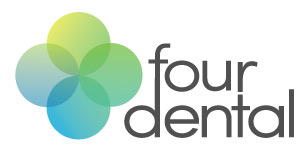Botox is often thought of as a way to reduce wrinkles, but there are a number of uses in dentistry. Botox and dermal fillers can help minimize TMJ and migraine symptoms, as well as reducing gummy smiles. While Botox and other dermal fillers are similar, it’s important to know the difference. Botox is derived from a neuromuscular toxin (botulinum), while most fillers are Hyaluronic acid, a naturally occurring nutrient that we lose as we get older.
Why Choose a Dentist for Botox and Dermal Filler Treatments
Dentists are especially adept at treating these conditions with Botox due to their extensive training and knowledge in oral and maxillofacial muscles. In fact, dentists perform more injections in the oral and maxillofacial areas than any other medical practitioner. By visiting a dentist for these procedures, you know they have the knowledge to ensure the proper injection sites for maximum relief.
Treating TMJ Disorder with Botox
If you suffer from TMJ-related pain, it’s possible to treat the cause without NTI’s or mouth guards. Botox injections help relax the muscles around the mouth and jaw. By doing so, the chances for a headache from teeth clenching and jaw pain is greatly reduced. Because of this muscular-based treatment, you can find relief that doesn’t involve an uncomfortable mouth guard.
Treating Migraines with Botox
Migraines can significantly impact a person’s daily life. Before Botox was approved for migraine relief, patients were subject to a variety of preventative treatments that often resulted in drug interactions and limited effectiveness.
Botox, however, has been studied and proven effective for the treatment of migraines. One study published in NCBI featured a double-blind, vehicle-controlled study with groups receiving differing dosages of botulinum toxin type A. This study showed that those receiving the Botox for migraine treatment saw significant improvement in the three month period following the injection. (It should be noted, though, that this study was developed for the BOTOX Migraine Clinical Research Group.)
Reducing Gummy Smiles with Botox
For those self-conscious about how their gums show when they smile, Botox can offer a change. This procedure is quick and doesn’t require surgery or a laser treatment. Treatment for a gummy smile focuses on a muscle that runs from the side of the nose to the upper lip. The Botox injection relaxes this muscle, preventing the upper lip from moving too far when smiling. These injections can also reduce chronic gingivitis, because it keeps the gums covered. Results will last about three to four months.
Since approved for treatment, many people have been choosing Botox and dermal fillers to help treat their TMJ, migraines, and gummy smiles. It’s important to choose a certified practitioner for the best and safest results, and Dr. Gogol-Mach’s certification and background as a Registered Nurse gives her the knowledge to skillfully treat these conditions.
For more information and to schedule a free consultation in our Embarcadero office, call us at (415) 576-9800 or schedule your next appointment online.
